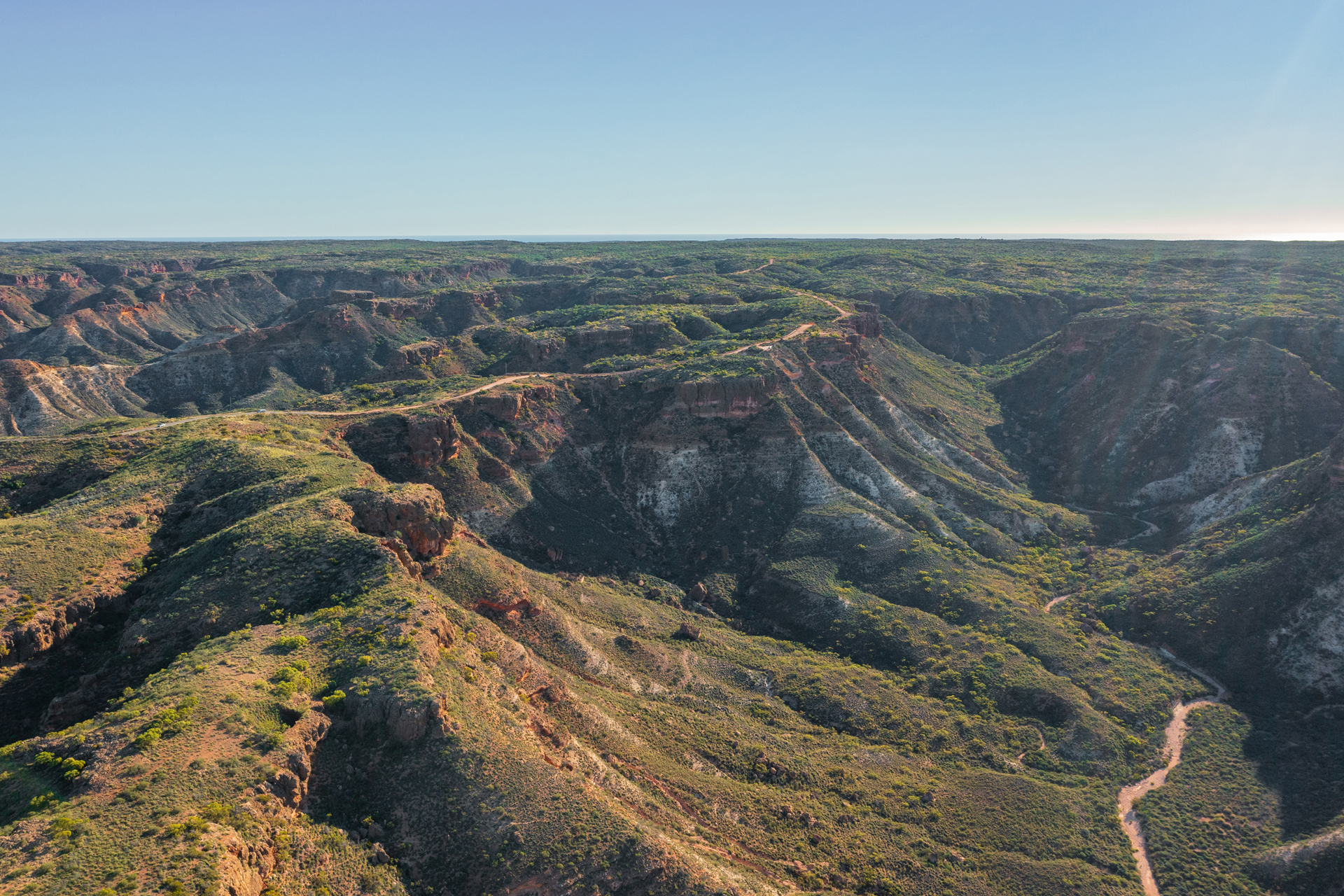
Driving in Cape Range National Park: Things you need to know
by
Cover photo: Charles Knife Canyon, Cape Range National Park. Photo credit: Peter Ketteridge
Did you know Western Australia is home to more than 60 National Parks? Each one is a gateway to some of the most incredible natural landscapes admired by interstate travellers and international tourists. Here in Exmouth, nature lovers looking to make unforgettable memories will find themselves spoilt for choice, with both the reef and the range to explore.
Keeping our feet on terra firma, Cape Range National Park is one of WA’s most scenic parks. It’s a special place to explore and our go-to whenever we need to connect with nature. The National Park can be found around 36 kilometres from the Exmouth township. With more than 60 kilometres of pristine white sandy beaches and spectacular canyons and limestone ranges, lovers of the great outdoors will feel right at home here.
Covering over 50,500 hectares, the best way to experience the park’s natural beauty is by car. Read on to discover everything you should know about driving in Cape Range National Park.
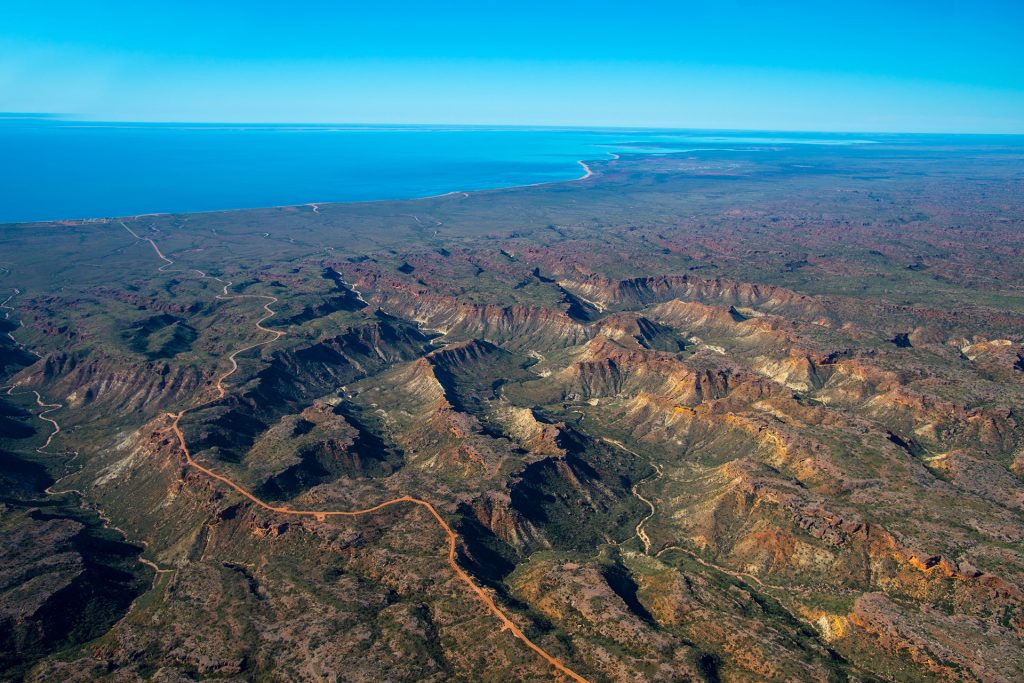
How to access Cape Range National Park
Cape Range National Park is well signposted and can be accessed via the main road through Exmouth. The only other route to access the park is through Ningaloo Station, which means crossing Yardie Creek.
Don’t try to access the westside of the National Park via Charles Knife Road or Shothole Canyon Road. Regardless of what Google tells you. Charles Knife Road is a no through road; it won’t take you all the way to the coast.
Entry fees apply, ranging from $8 per motorcycle to $15 per vehicle (private vehicles up to 12 occupants) for a Day Pass. The easiest way to purchase your Park e-Pass is online, but they are also available from park entry stations, Parks and Wildlife offices and some visitor centres.
There is a variety of different e-Passes to suit all travellers. If a Day Pass isn’t enough, a Holiday Park Pass will give you more time to explore eligible WA National Parks for up to five days, 14 days or one month. An Annual All Parks Pass will provide unlimited entry for 12 months.
Always check for alerts and any road and park closures before commencing your journey.
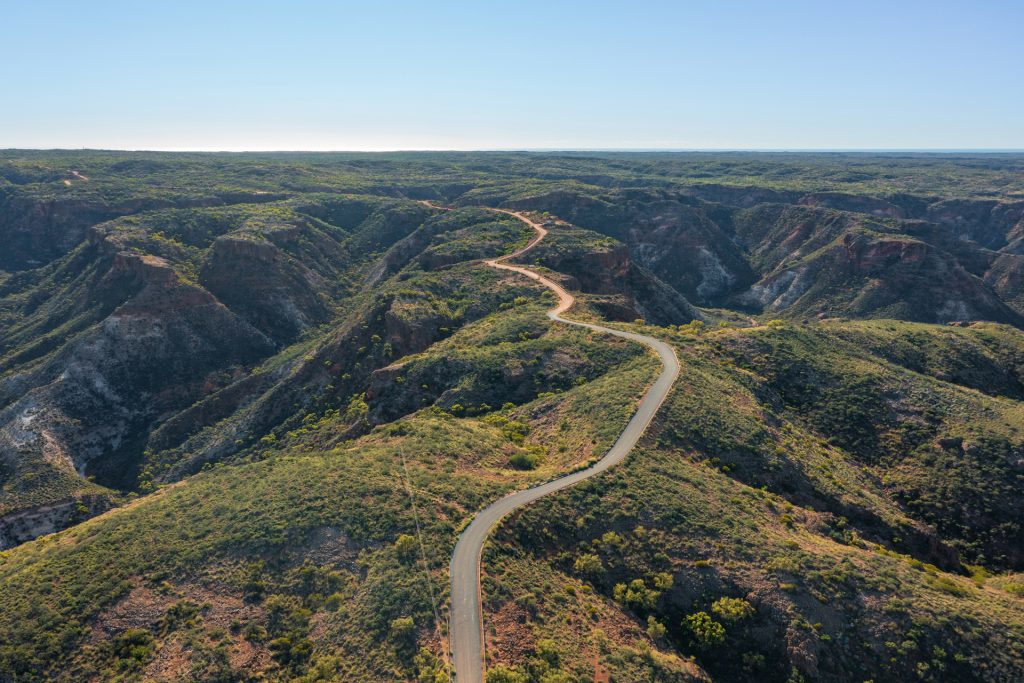
2WD or 4WD?
If you’re visiting Cape Range National Park with a conventional vehicle, you’ll find that most roads and tracks within the park are accessible. The main access road from Exmouth up to Yardie Creek is sealed and suitable for 2WD vehicles. However, we recommend exploring with a 4WD to get the best out of the experience.
Roads providing access to the National Park’s beaches are mostly unsealed and will, therefore, be suitable for most 2WD vehicles in dry weather. But during wet weather, roads can deteriorate quickly, and conventional 2WD cars can easily get stuck. Retrieving bogged vehicles can be expensive.
If you want to cross Yardie Creek, this is only possible with a high clearance 4WD. Do not attempt to cross the soft sand bar in a 2WD. We only recommend crossing the creek if you are experienced and confident driving a 4WD. The soft, shifting sand will make trying to cross Yardie Creek a challenge. Seasonal and tidal flooding also makes crossing difficult.
You will need a 4WD if you want to take the 12 km scenic drive to enjoy Shothole Canyon and its epic Instagrammable views towards the Exmouth Gulf. The canyon is accessible via the Minilya-Exmouth Road, 14 km south of Exmouth. Shothole Canyon Road is a rough gravel track, only suitable for 4WD vehicles.
Not far from Shothole Canyon, take Charles Knife Gorge Road to the top of the range for even more spectacular views of the National Park’s multi-coloured gorges. Part of the access road is gravel but most conventional 2WD vehicles should be able to cope with the terrain. However, the track to the lookout at the top is not suitable for a 2WD.
Some car rental agreements restrict vehicles from driving on unsealed roads. If you have hired a car, remember to check the policy before heading to any National Park.

Watch out for wandering wildlife
Undeniably, seeing native wildlife in their natural habitat is one of the highlights of a trip to Cape Range National Park. The park is home to wallabies, kangaroos, dingoes, emus, and echidnas. But because wildlife wanders about so freely, you must always keep your eyes open when driving through the park.
Sadly, around 10 million animals are hit by vehicles on Australian roads each year. Most collisions involve kangaroos. Inattention and speed are the main contributing factors when motor vehicles collide with kangaroos.
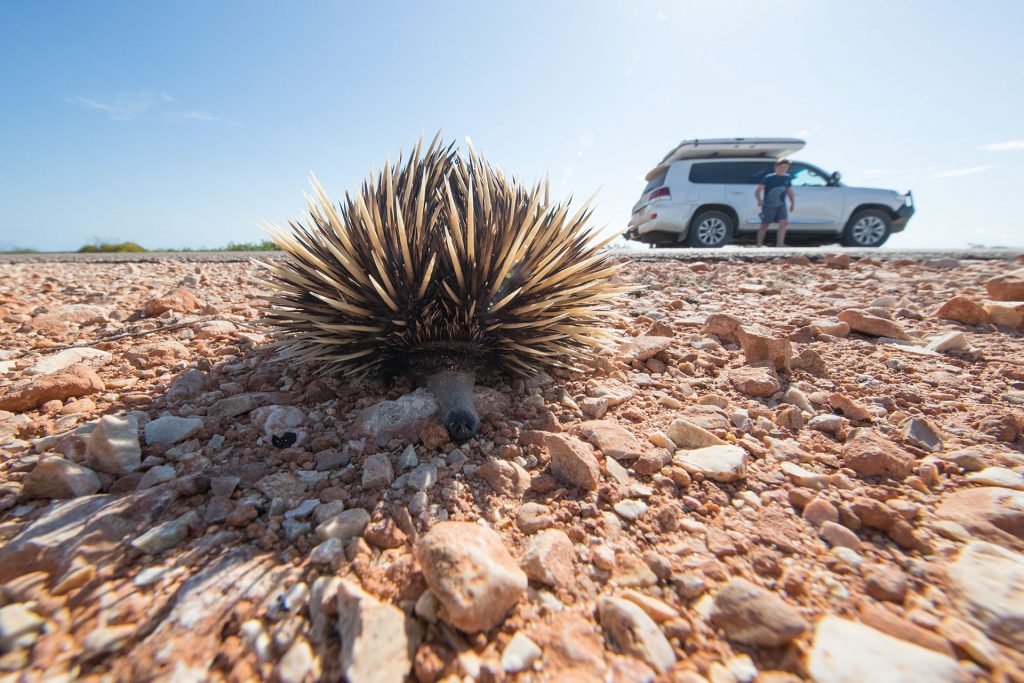
Best time to explore Cape Range National Park by car
For obvious reasons, the best time to explore any National Park is during daylight hours. If possible, avoid driving at dawn and dusk. Local wildlife will be at their most active, so if you must drive during these hours, drive slowly and with caution. Due to the high number of animals on the road, Cape Range National Park employs a ‘no drive after dark’ policy. Don’t forget to adhere to the speed limit (maximum speed is 80 kph) and do not overtake.
Even during daylight hours, be mindful of driving in poor weather conditions when your visibility is likely to be considerably reduced. Wandering wildlife like emus, kangaroos, and wallabies will be harder to spot.
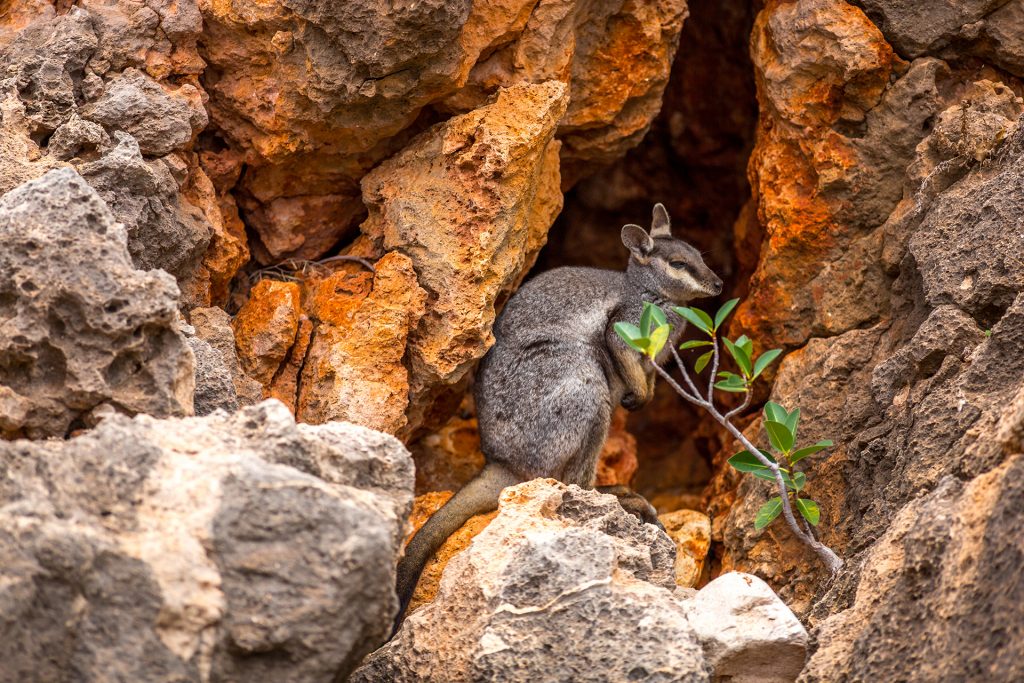
Dogs aren’t allowed in National Parks
Like most National Parks, Cape Range National Park has a strict no dogs policy. So, you can’t bring your four-legged pal with you, sorry. Exceptions apply only for assistance animals. If you’re visiting Exmouth with your dog, stick to the places dogs are permitted. Exmouth has several dog-friendly beaches, including Bundegi Beach and Macleod Beach.
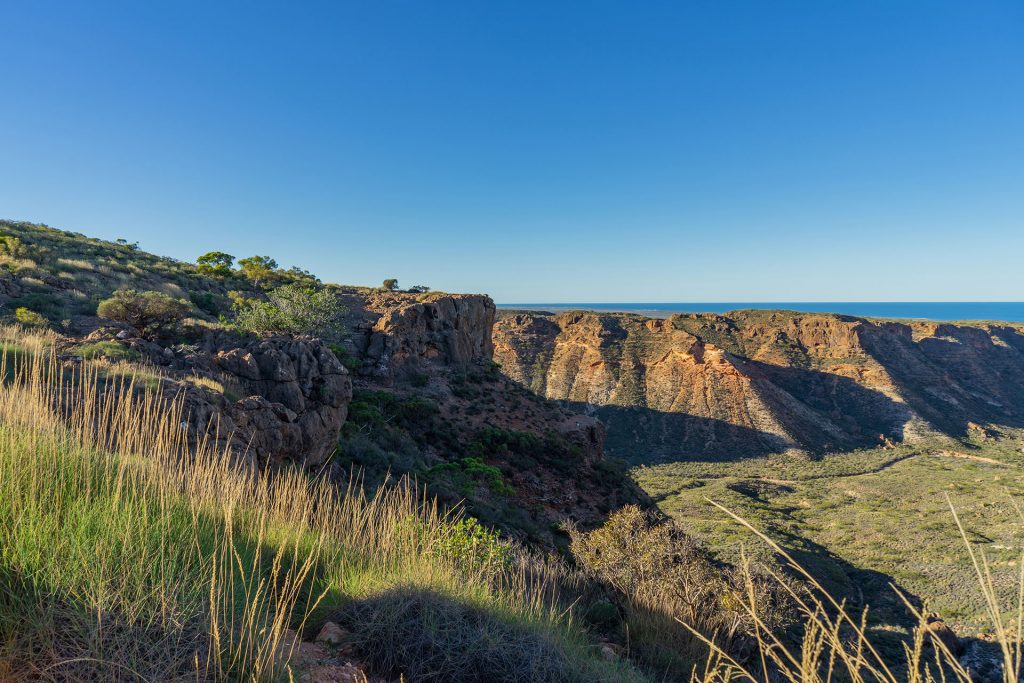
Milyering Visitor Centre
Head to Milyering Visitor Centre for help, advice, and information. Here you will find interpretive displays and audio-visual facilities. The self-guided centre is open all year, except Christmas Day, between 9 am and 3.45 pm. Park rangers are on hand to answer questions, and you can use the on-site toilet facilities and purchase light refreshments.
There is a public telephone next to Milyering Visitor Centre. The mobile phone signal within Cape Range National Park isn’t great. But it has improved and there are a few spots in the park with Telstra coverage. You can also access a Telstra hotspot at the visitor centre.

Safety tips
Cape Range National Park calls a remote peninsular in northwest Western Australia home. As with any National Park, safety should be your number one priority.
Due to patchy mobile phone reception, think about travelling with a satellite phone or personal location beacon (PLB). It will be your lifeline if you get lost. Same if your vehicle breaks down.
Also, consider carrying the latest edition of a printed road map. And don’t forget to take plenty of drinking water with you.
Remember, temperatures can reach 45°C or more in the summer months. If you want to explore the park on foot, wear suitable clothing and footwear and avoid walking during the summer. Stick to walking Cape Range National Park between April and September. Find out more about must-do Cape Range hiking and walking trails.
During tropical cyclone season (November to April), parks and roads can be temporarily closed. Head to the Parks and Wildlife website to check before you set off on your journey.
Exploring Cape Range National Park – by car or on foot – is a must-do. But there’s even more amazing things to see and do in Exmouth and Ningaloo. Whether you’re on holiday with the family or just passing through, you’ll never regret making the time to make memories to last a lifetime.
